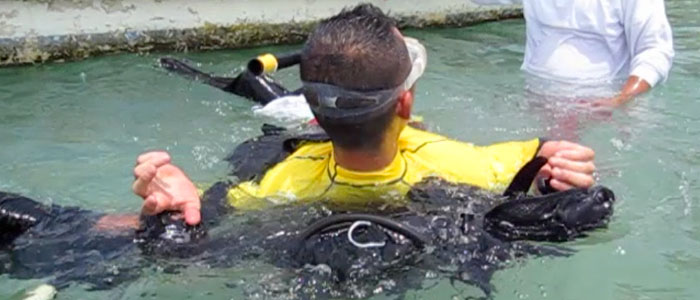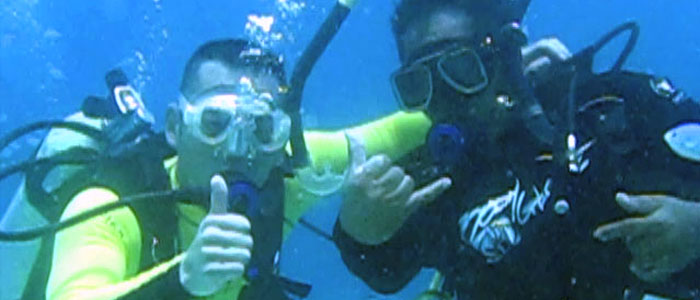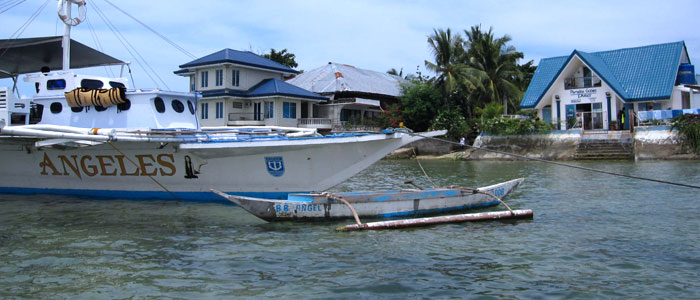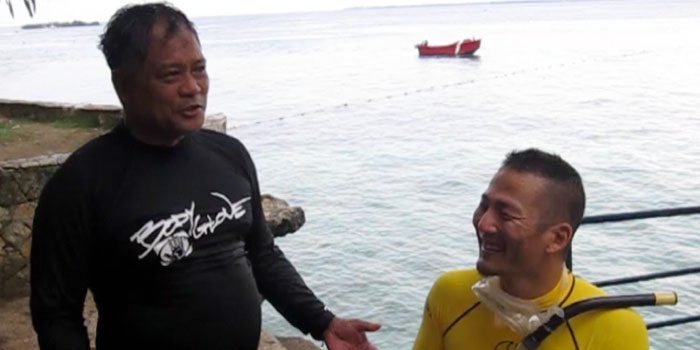Cebu, Philippines Travel Guide
About Getting Around Attractions Hotels Eats & Nightlife Essentials & Practicals
Scuba Diving in Cebu

Scuba Diving in Cebu
Overview: I used to wear thick metal leg braces when I was a kid. Back then, the leg braces probably weighed as much I did. I was maybe 4 or 5 when I made my first ever splash into a swimming pool. Needless to say, I found myself at the bottom of a very large and scary swimming pool. This was back in Seoul, Korea. A few years later, my American mother put me in a swimming pool in a southern California backyard – without the braces. I found myself in the same predicament: at the bottom of the pool. This time, with my brother, unwittingly, on top of me, horsing around and keeping me down with his feet! Boy did I cry when I surfaced. I have to laugh at this. Quickly, however, I became a water baby so to speak. I worked at a swimming pool in high school and boogie boarded for almost a decade – sometimes in 8 to 10 feet waves. Swimming became as natural to me as wheeling around.
A couple of decades later, I find myself at the bottom of Maribago Bay in Mactan Island, Cebu, Philippines. This time, my buoyancy control is being tested by my scuba diving instructor over the fascinating corals surrounding Mactan Island. Focus on my breathing technique. Relax. That’s the key. I want to stay above the coral a couple of feet. Don’t disturb the habitat my instructor, Alfred, and the authors of the PADI Open Water Manual caution. Push the deflator button on the BCD (Buoyancy Control Device) just slightly. Only inflate your BCD when I’m at the surface to keep me afloat. Alfred motions for me to hold the top of my mask and breathe out of my nose to push the bit of water that’s seeped into my mask. Finally, I literally sat still in the water, 60 feet below the surface at the border of the shallow coral reef and the edge of a 1000 feet drop. On the shallow side is beautiful, clear water teeming with colorful, playful fish and dotted with coral. The other side, I face an immense, dark blue wall. It is frightening and exhilarating at the same time.

Scuba Diving in Cebu
You don’t need to be an expert swimmer to scuba dive. If you can swim, instructors will probably ask you to swim a little bit of distance to demonstrate your ability. However, you don’t need to know how to swim at all, believe it or not. In Bali, I met the owner and dive instructor of BIDP Bali Diving. He and his colleagues taught a quadriplegic woman to dive. The truly impressive part of this story is that the woman wanted to dive! You just need the interest to learn how to scuba dive. You need curiosity, willingness and a spirit of adventure.
Cebu is one of the world’s top scuba diving destinations. Cebu City itself doesn’t have great scuba diving but the other cities in the Cebu Province and the surrounding islands (and the greater Visayas region) offer world-class diving spots. One of the most famous islands in Cebu is Malapascua, a tiny island north of the main Cebu island. Malapascua offers some of the most scenic coral gardens as well as regular visits by thresher sharks. This small island off Cebu is quickly approaching Borocay as THE island to visit in the Philippines.

Scuba Diving in Cebu
The southwest town of Moalboal on Cebu Island, however, reigns as the king of diving spots in Cebu. Panagsama Beach and White Beach are favorite destinations of Moalboal and Moalboal’s Pescador Island is highly regarded for its marine wildlife and rich coral reef. The costs for diving and lodging in Moalboal are reportedly the best anywhere.
Mactan Island, where I had my PADI diving course, is just 25 minutes east of Cebu City. It’s also where Cebu’s international airport is located. Dive shops on Mactan Island abound as well as diving sites and marine life. See below for some dive shops contacts. Olango Island, a couple of miles east of Mactan Island, is one of the most popular dive spots for both tourists and locals.

Alfred Alesna, dive master, in Cebu
By the way, my kind and patient scuba instructor, Alfred Alesna, demonstrated expert knowledge and patience throughout the course. I passed and received my PADI Open Water scuba diving certification.
DIVE SHOPS
Name: Alfred Alesna
Location: P.O. Box 55 MCPO, Subangdaku, Mandaue City 6014
Email: alfred@0814@yahoo.com
Ph: +63 927 383 7064
Cost: P15,000
Name: Tropical Island Adventures
Location: Buyong Beach, Maribago, Lapu-lapu City, Cebu 6015
Site: www.cebudive.com
Email: info@cebudive.com
Ph: 63 32 492-1922
Cost: discover diving $40 to $70, courses $175 to $660
Name: Kontiki Divers
Location: Club Kontiki, Maribago, Lapu – lapu City, Cebu
Site: www.kontikidivers.com.ph
Email: 7seas@mozcom.com
Ph: 63 (0) 32 495 2471
Disabled Scuba Diving Resources: the International Association for Handicapped Divers (IAHD) and Handicap Scuba Associations (HSA) are two of the main disabled diving organizations.
Site: www.IAHD.org
Site: www.HSAScuba.com
Accessibility: Some dive shops are more wheelchair accessible than others. But, the logistics such as boats, how to access the boats and lifts on boats should be of more importance. Scuba Diving itself is handicapped accessible.
Getting There: Arrange rides through the dive shops. Find out if transportation is included. Dive shops don’t seem to pad costs too much for transportation. Otherwise, cab it.